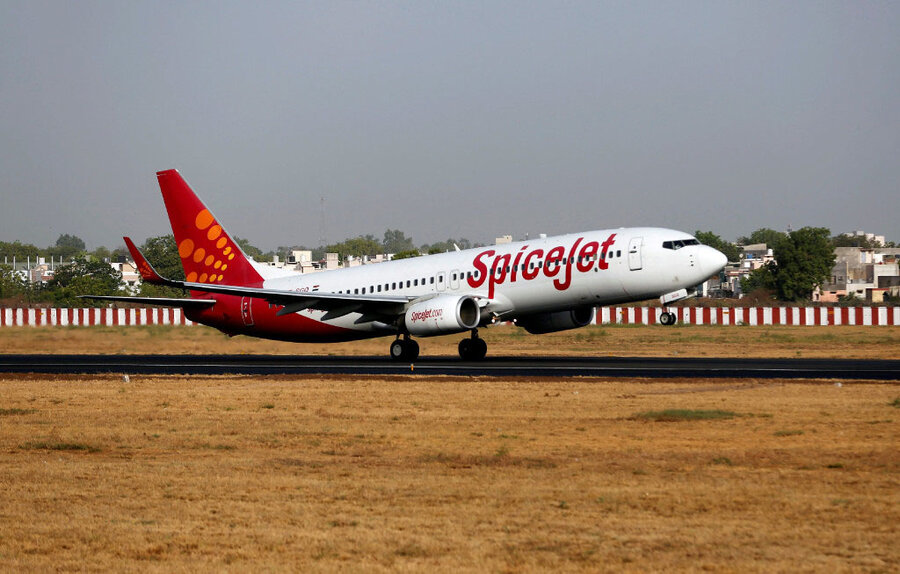SpiceJet buys 100 narrow-body planes: The future of air travel in India?
Loading...
On Friday, Indian airline SpiceJet announced that it would acquire 100 new 737 MAX airliners from Boeing, with an option to acquire 50 more of the same aircraft.
"What this aircraft order does is enhance our ability to be competitive in the future as it helps us reduce costs," the airline’s chairman, Ajay Singh, said in a news conference in New Delhi, as Reuters reported.
In the airline industry, trying to reduce costs is nothing new. But India’s carriers have pursued this goal amid a surge in demand: The number of Indian airline passengers grew 37-fold between 1970 and 2015, when 99 million Indians flew. In this huge, fast-growing market, SpiceJet’s decision to buy the narrow-body 737 offers a glimpse at the future of commercial aviation.
In the 2000s, airlines and airplane manufacturers saw size as key. On Jan. 17, 2005, Airbus unveiled its double-decker “superjumbo” A380 aircraft to much fanfare. “We’ll sell 700 or 750,” Noel Forgeard, then Airbus’s chief executive officer, confidently said at the time, according to the BBC.
Developing countries like India, whose growing middle classes could afford to fly for the first time, were expected to drive this demand. Half a dozen airlines were started to serve India's "fast-growing and flush middle class" after the Indian government opened commercial aviation to increased competition, and "Passenger numbers surged as cheap flights proved an irresistible alternative to long, bumpy train journeys," as The Christian Science Monitor reported in 2009.
These airlines hit turbulence during the 2008-2009 global recession. Eight years later, India’s air travel numbers are rising again. But few, if any, Indians are taking their first flights on an ultra-large jet. Ten years after the A380’s launch, only 207 of the aircraft have been sold – well below the “700 or 750” predicted by Mr. Forgeard 12 years ago.
The 737 MAX’s maximum seating of 200 can’t compete with the A380’s 555 seating capacity – or can it? Airbus predicted “increasingly crowded hubs and Asian economic expansion would spur demand for legions of superjumbos across the planet.... Boeing saw things differently, suggesting globalization would demand higher frequencies on trunk routes combined with a multiplicity of new services linking smaller cities,” Bloomberg reported in July.
Boeing’s prediction has since borne out, and airlines like SpiceJet are doing most of their business on shorter planes. In 2016, more than 18 million Indians flew internationally, compared with almost 90 million on domestic routes.
Smaller planes make sense for these shorter routes. With more, smaller aircraft like the 737, an airline can re-deploy aircraft as needed to meet changing demands. SpiceJet already fills its planes at a higher rate than any of its competitors.
SpiceJet’s new purchase makes it well-equipped to continue this strategy. It also pushes Boeing’s expectations on which planes could prove most profitable. The Seattle-based aircraft giant believed that both trunk routes and flights between small cities would work best with mid-sized, wide-bodied planes like the 777 and the 787, as Bloomberg reported. But its newest customer, whose domestic routes connect some of the largest cities in the world, is thinking even smaller.







